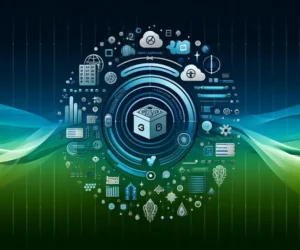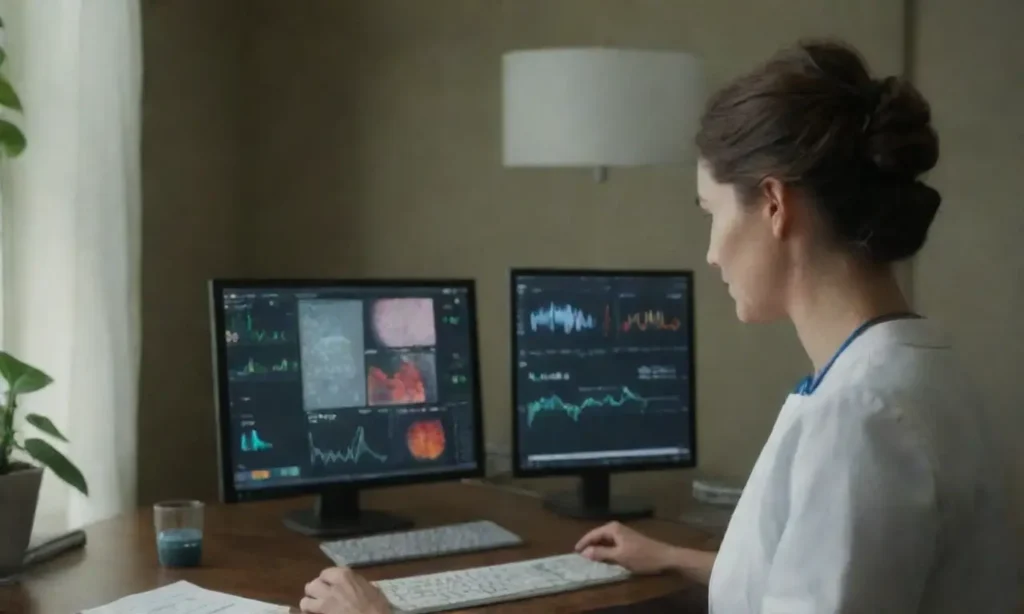
Enhancing Home Health Monitoring with Machine Learning Applications

Introduction
In recent years, home health monitoring has emerged as a compelling solution to address the growing demand for chronic disease management and preventive care. As medical costs continue to rise, there's an increasing emphasis on patient-centered care that not only focuses on the disease itself but also considers the whole person. Home health monitoring enables patients to manage their health conditions in the comfort of their own homes with the aid of modern technology, thus reducing hospital visits and enhancing the quality of life.
This article explores the various applications of machine learning (ML) in enhancing home health monitoring. We will delve into how ML algorithms analyze data collected from various health monitoring devices, allowing for personalized care and timely interventions. Additionally, we'll discuss the challenges, opportunities, and future prospects of integrating machine learning technologies into home health systems.
The Role of Machine Learning in Home Health Monitoring
Machine learning is a subset of artificial intelligence (AI) that enables systems to learn from data and make predictions or decisions without explicit programming. In the realm of home health monitoring, machine learning can process vast amounts of health-related data collected from wearable devices, mobile apps, and other remote monitoring tools. For instance, devices such as smartwatches, blood glucose monitors, and heart rate trackers generate continuous streams of data that need to be analyzed for actionable insights.
The integration of ML into home health monitoring systems enables real-time analytics. By leveraging algorithms, health data can be interpreted quickly and efficiently, allowing caregivers and healthcare providers to receive immediate alerts about shifts in a patient's condition. Such immediate feedback can lead to timely interventions, preventing potential emergencies that may require hospitalization. For older adults or individuals with chronic diseases, this timely intervention can be the difference between life and death.
Machine Learning Algorithms for Personalized Smart Home ExperiencesAdditionally, machine learning models can recognize patterns in patient data that might not be apparent to human healthcare providers. Through techniques like supervised, unsupervised, and reinforcement learning—healthcare professionals can gain deeper insights into patient behavior and health trends. For example, ML algorithms could analyze variations in daily activity levels, physiological parameters, and medication adherence, allowing for tailored health advice or interventions.
Personalized Treatment Plans Through Predictive Analytics
One of the most remarkable uses of machine learning in home health monitoring is its ability to help in designing personalized treatment plans. Traditional healthcare often follows a “one-size-fits-all” model that may not address the individual needs of patients. Machine learning helps shift towards a more patient-centric approach by personalizing treatment based on real-time data collected from the patient’s daily lifestyle.
For example, using historical health data, an ML model can predict how a patient might respond to certain medications or therapies. If a patient has high blood pressure, machine learning can analyze various factors such as diet, exercise, medication adherence, and even stress levels to predict risks and recommend specific lifestyle changes or medication adjustments. This level of personalization significantly enhances the probability of adherence to treatment plans, as they are tailored specifically to the individual's needs.
Moreover, machine learning can be employed to monitor how effective a treatment is on a patient over time. Some algorithms can adjust treatment suggestions based on ongoing data inputs, effectively creating a dynamic treatment plan that evolves as the patient's condition changes. For individuals with chronic illnesses, this means their treatment can adapt in real-time to their needs, promoting better health outcomes and a higher quality of life.
Enhancing Remote Monitoring Capabilities

The ongoing advancements in internet of things (IoT) technology complement the capabilities of machine learning in home health monitoring. With the proliferation of connected devices, healthcare providers can gather comprehensive data on their patients. However, the challenge lies in effectively analyzing this data to extract meaningful insights that can inform care decisions.
Machine learning applications in remote monitoring involve sophisticated predictive analytic techniques that can aggregate and process real-time data from these devices. For instance, wearables can monitor vital signs such as heart rate, oxygen levels, and activity levels, sending the information back to a central system where machine learning algorithms take over. These algorithms can then interpret the data patterns and flag anomalies—such as consecutive elevated heart rates or erratic glucose levels—for further investigation by healthcare providers.
This capability not only ensures early detection of potential health issues, but it also facilitates ongoing management of a patient’s condition. For COPD patients, for instance, machine learning can analyze data indicating a drop in daily activity, leading to timely consultations regarding medication adjustment or pulmonary rehabilitation exercises. This proactive approach underlines the shift toward preventative healthcare rather than reactive treatment, ultimately leading to reduced healthcare costs and improved patient satisfaction.
Overcoming Challenges in Implementation
While the potential benefits of incorporating machine learning into home health monitoring are immense, there are also several challenges that must be addressed for successful implementation. One significant hurdle is ensuring the quality and accuracy of data collected from health monitoring devices. Inaccurate or incomplete data can lead to faulty conclusions from machine learning algorithms, potentially putting patient safety at risk.
Moreover, data privacy and security pose another critical challenge. With the increasing amount of sensitive health information being collected from individuals, it is vital to implement robust security protocols to protect this data from breaches. Regulatory frameworks, such as HIPAA (Health Insurance Portability and Accountability Act), need to be considered when developing machine learning applications, ensuring that patient data is handled ethically and legally.
Additionally, there is a requirement for multidisciplinary collaboration among software developers, healthcare professionals, and data scientists to create effective machine learning models. This collaboration is essential to define relevant clinical outcomes, ensuring that machine learning tools meet the practical needs of healthcare providers while also enhancing patient care.
Lastly, there is a significant need for the education and training of both patients and healthcare providers. Users must understand how to interact effectively with monitoring technologies and interpret the data they generate accurately. Providing comprehensive training can help address resistance to adopting new technologies and increase the overall efficacy and acceptance of machine learning applications in home health monitoring.
Future Prospects of Home Health Monitoring with Machine Learning
The future of home health monitoring, augmented by machine learning, is promising. Rapid advancements in technology are unlocking innovative capabilities that can transform healthcare delivery. The ongoing development of wearable sensors, improved battery life, and real-time data analytics capabilities indicates a trend toward more sophisticated health monitoring devices.
Looking ahead, integration with electronic health records (EHR) will further enhance the personalized care experience. Linking machine learning algorithms with EHR data can create a comprehensive picture of a patient’s health, improving risk assessments and treatment protocols. Health systems will increasingly leverage this integrated data to create predictive models that not only inform individual care but can also guide population health management efforts.
Furthermore, as the healthcare landscape gradually adopts value-based care models, machine learning can play a critical role in optimizing resource allocation. By identifying which patients are more likely to require interventions, healthcare providers can allocate resources more effectively, ensuring that attention is directed toward high-risk individuals.
Emerging technologies such as natural language processing (NLP) are also expected to play a role in enhancing home health monitoring. NLP can be used to analyze unstructured data from patient communications (e.g., texts or voice messages) to flag concerns, provide insights into mental health status, or assess symptom severity. These advancements could significantly improve how remote monitoring is executed, enhancing both patient and healthcare provider experiences.
Conclusion
Machine learning has a transformative potential in enhancing home health monitoring, presenting opportunities for personalized care, improved outcomes, and proactive healthcare strategies. By utilizing advanced data analytics, healthcare providers can better understand patients' needs and provide targeted interventions, leading to measurable improvements in health outcomes.
While challenges remain, including data quality, privacy concerns, and the need for education and cross-disciplinary collaboration, the continued evolution of technology holds great promise. A future where patients manage their health effectively in the comfort of their homes, supported by intelligent machine learning applications, is within reach.
As we look to the future, it is essential for stakeholders—healthcare providers, technology developers, and policymakers—to collaboratively navigate this landscape. By addressing the challenges and maximizing the opportunities presented by machine learning, we can create more efficient, effective, and patient-centered home health monitoring systems, ultimately leading to a healthier society. The journey is just beginning, and the potential positive impact of these technologies on home health monitoring is both profound and exciting.
If you want to read more articles similar to Enhancing Home Health Monitoring with Machine Learning Applications, you can visit the Smart Home Devices category.



You Must Read